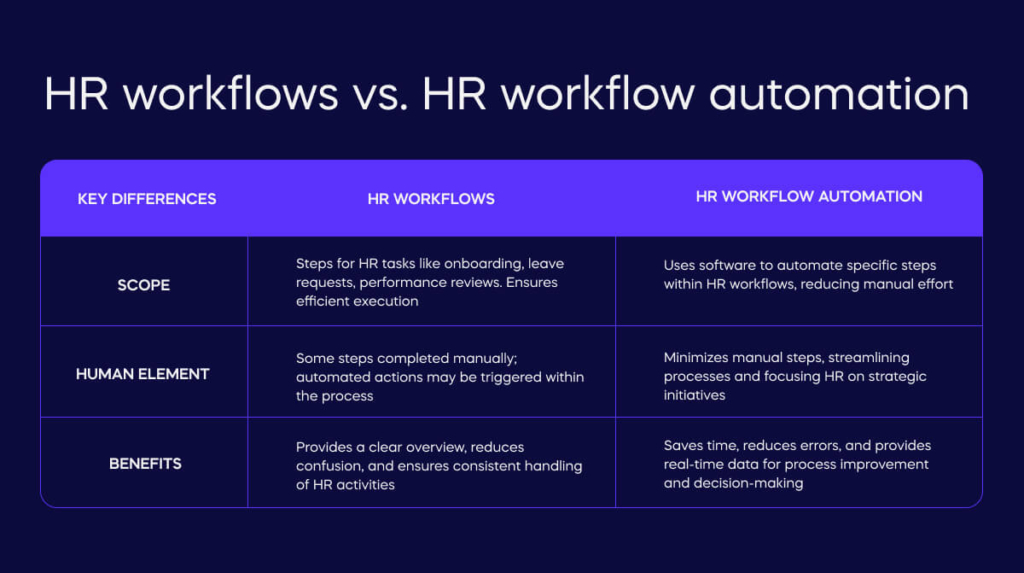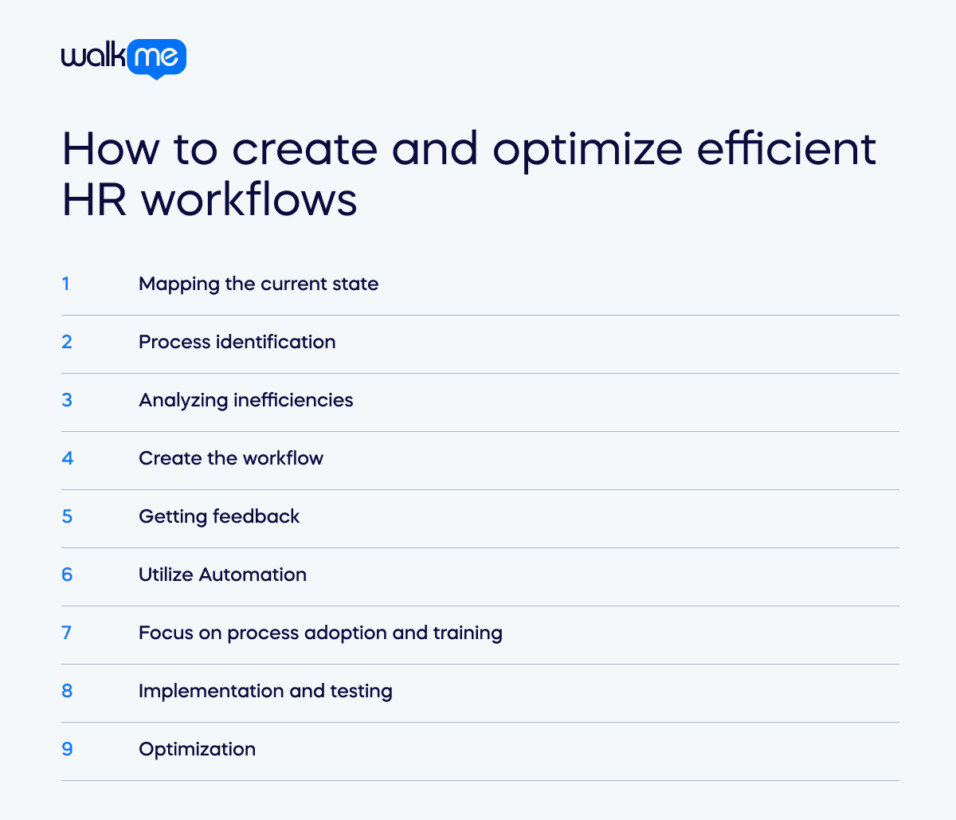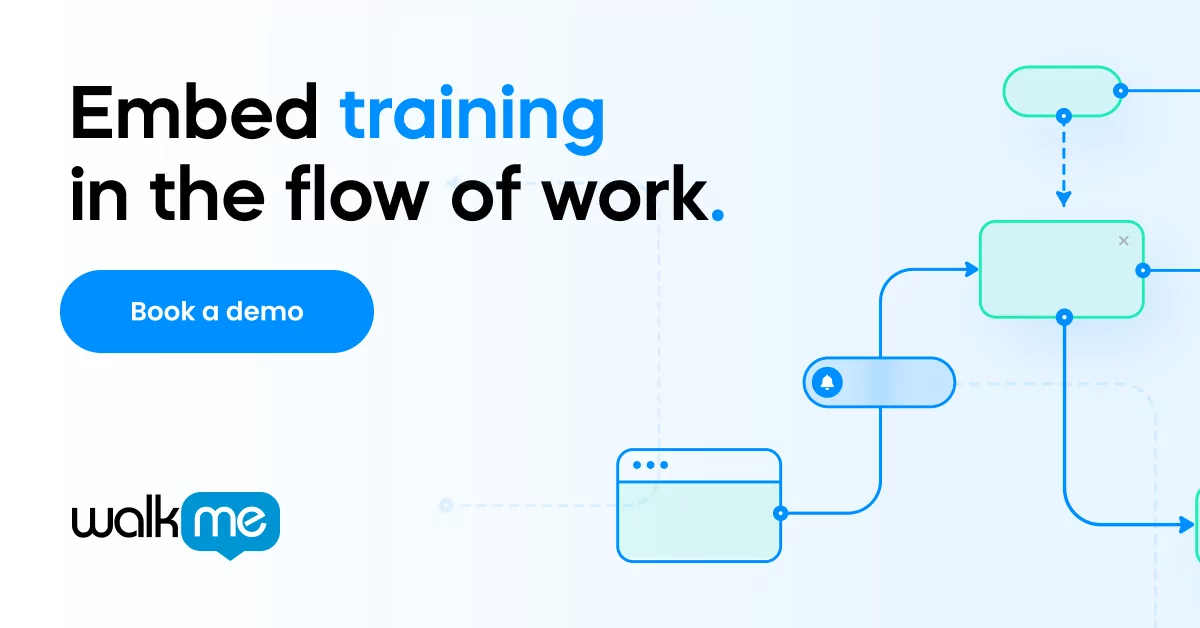Think of your HR department as a complex machine with many moving parts.
Wouldn’t it be great if those parts always worked in perfect sync? That’s where HR workflows come in. These sequences streamline everything from hiring and onboarding to payroll management and offboarding.
HR workflows eliminate the guesswork, reduce errors, and allow your team to focus on what matters most—your people.
Finding the perfect fit can be tough. 43% of HR professionals say it’s their biggest hiring challenge, mainly because other companies are also vying for top talent.
HR workflows directly address sluggish people processes holding organisations back. Working to enhance them contributes to faster onboarding, smoother transitions, and more efficient teams.
This article explores the concept of HR workflows. We’ll learn what they are, along with common examples, potential benefits, and challenges encountered during implementation. We’ll also provide practical guidance on creating and optimizing HR workflows, empowering organizations to simplify key processes.
What is a HR workflow?
HR workflows are the step-by-step tasks that manage people within an organization.
They outline how things get done in the HR department. Common HR workflows include onboarding new employees, handling time-off requests, and performance management.
These workflows help HR teams save time, reduce errors, and ensure everyone follows the same procedures. Creating clear workflows means HR departments ensure that all employees are treated fairly and consistently.
HR workflows are like blueprints for standard HR procedures. Both involve completing a specific task, but workflows take it a step further. They map out the exact order of steps and who’s responsible for each, often including tools or forms needed.
Standard procedures are more general instructions. For example, a recipe listing ingredients but not quantities or cooking times. Workflows provide a more detailed roadmap to get the job done consistently.
HR workflows vs. HR workflow automation

HR workflows and HR workflow automation are related but distinct concepts.
Understanding the differences helps you make informed decisions about optimizing your HR processes.
HR workflows
These are the steps involved in completing an HR task. It’s a sequence of actions, decision points, and people responsible that outlines the standard operating procedure within HR. HR workflows bring consistency and clarity to processes like onboarding or performance reviews.
HR workflow automation
This involves using technology to automate steps within an HR workflow. Automation can handle repetitive, rules-based tasks like sending reminder emails, pre-populating forms, or routing approvals. The goal is to free up HR teams for more strategic work and improve overall efficiency.
Key Differences
| HR workflows | HR workflow automation | |
| Scope | HR workflows Outlines the expected steps for each HR task, like onboarding, leave requests, or performance reviews. HR workflows are the individual steps that make up larger HR processes. These workflows ensure efficient and consistent execution. | HR workflow automation takes pre-defined HR workflows and utilizes software tools to automate specific steps within them. This translates the planned process into an automated system, helping reduce manual effort. |
| Human Element | HR personnel may complete some steps manually, like conducting interviews or providing feedback. However, workflows may trigger automated actions within the defined process, like sending email notifications. | HR workflow automation eliminates as many manual steps as possible, aiming to streamline processes and minimize human intervention. This allows HR teams to refocus attention on strategic initiatives. |
| Benefits | HR workflows provide a bird’ s-eye view of each process, reducing confusion and wasted time. This ensures consistent handling of HR activities, regardless of the HR staff member involved. | Automation amplifies the benefits of HR workflows by saving time, reducing errors, and providing real-time data on how the process is performing. This allows for ongoing improvement and enhanced HR decision-making backed by data. |
What are some HR workflow examples?
Now that you have an idea of which HR workflows work best for your needs, let’s explore some prominent HR workflow examples:
Onboarding
HR workflows can help streamline the onboarding process, from offer acceptance to a new hire’s first day. This might include completing paperwork, equipment setup, introductions, and orientation training.
Offboarding
Managing employee departures may also require a dedicated HR workflow. Workflows can be created for conducting exit interviews, securing company property, finalizing payroll, and ensuring smooth knowledge transfers.
Performance reviews
Provide a structured way to assess and develop employee performance. HR workflows for these tasks involve setting goals, collecting feedback, conducting appraisal meetings, and creating improvement plans.
Time-off requests
HR workflows can set up clear procedures for requesting and approving paid time off. This involves employees submitting requests, managers reviewing and approving, and automated notifications.
Expense management
HR workflows can be designed to ensure proper tracking and reimbursement of employee expenses. This involves employees submitting reports, managers approving, and the finance department processing reimbursement.
How to create and optimize efficient HR workflows

Now that you understand HR workflows, let’s dive into creating and optimizing efficient ones.
These steps, covering everything from preparation to post-launch, will guide you through the entire process.
- Mapping the current state
The first step in creating an HR workflow is mapping the current state. This provides a clear snapshot of how things are currently done.
To gain an understanding, start by interviewing key individuals affected by the change. Include employees, managers, and any HR team members involved. This will capture their perspectives, insights, and potential pain points.
Observe the process to understand the real-world flow, potential delays, and technology use. Then, gather all relevant documentation, such as forms, policies, email templates, or other communication tools. With all this information, create a detailed flowchart or process map.
Visually represent every step, decision point, handoff between people, and system or tool involved. This mapping will reveal areas for improvement, provide a baseline for measuring the workflow’s success, and prevent overlooking crucial details.
- Process identification
Identifying which workflows need changing becomes the natural next step.
When choosing an HR task to optimize, consider several factors.
Look for opportunities to improve the employee or HR team experience.
Identify high-volume tasks that consume significant time and resources. These are strong candidates for optimization as streamlining them can yield noticeable efficiency gains.
Then, focus on processes with direct strategic impact. By optimizing workflows that support broader company goals, you’ll drive both employee productivity and overall business success.
Choose one task at a time for the most focused and effective workflow optimization. This approach allows for careful planning and a higher chance of successful implementation.
- Analyzing inefficiencies
HR processes that are overly complex, confusing, or prone to delays? Analyzing inefficiencies is where you become a process detective.
With your detailed process map, you can uncover what is slowing down your HR workflow.
Bottlenecks are areas where tasks pile up and get delayed, creating frustration for everyone involved.
Look for steps that require approvals, involve multiple people, or rely on outdated technology. These are prime locations for streamlining and improvement.
Next, identify redundancies. These steps or tasks are unnecessarily repeated or could be easily combined to reduce wasted effort. Perhaps the same information is entered into multiple systems, or paperwork gets reviewed by too many people. Identifying these redundancies allows you to trim away unnecessary actions.
Start brainstorming solutions: Could approvals be done simultaneously? Could technology automate manual data entry? Would clearer instructions prevent delays throughout the process?
- Create the workflow
Now, it’s time to create the perfect HR workflow.
Start by taking the insights from your process map and inefficiency analysis. This will help you build a new visual representation of how you want the HR process to work. Use clear symbols and shapes to show each step, decision point, and the people responsible. Think about how you’ve addressed bottlenecks and redundancies – is the workflow smoother now?
Your workflow diagram should be easy to follow and understand. Think of it as a roadmap guiding everyone through the process. Use different colors or arrows to indicate paths, responsibilities, or levels of importance.
The goal is to create a clear and logical design that eliminates confusion and promotes efficiency.
- Getting feedback
Before launching your new workflow, get feedback from the people it will impact.
“Stakeholders” are anyone involved in or affected by the process – employees, managers, and other HR team members. Their insights are valuable. They might notice problems you missed or have ideas to make the process even better.
Gather feedback in various ways. Surveys or questionnaires are great for collecting input from a large group. For more detailed discussions, hold focus groups or one-on-one meetings.
Clearly explain the new workflow and the reasons for the changes. Then, actively listen to their feedback. This step demonstrates that you value their opinions and helps ensure the success of your new process.
- Utilize Automation
Advances in automation offer exciting opportunities to transform your HR workflows. As AI-powered solutions become more accessible, HR strategists are capturing its potential for improving operations.
Start by looking for mundane, repetitive activities within your HR processes. Scheduling interviews, compiling routine reports, and manually updating data are all candidates for automation. This lets your teams focus on more strategic work, while the rest gets automated.
Automation can streamline data management, ensuring accuracy and reducing your team’s workload. Another popular solution is using AI-powered chatbots or recommendation engines to personalize employee or job candidate experiences. 24/7 accessible chatbots can answer frequently asked questions, guide individuals through processes, and even offer personalized training.
AI analytics has an impressive ability to uncover patterns and trends within your HR data. This can help you proactively address potential retention issues, predict future hiring needs, and make informed decisions aligning with your company’s overarching goals.
- Focus on process adoption and training
Even the best-designed workflows can fall short if users don’t know how to navigate them.
Prioritize a smooth transition by incorporating training and intuitive design elements directly into your new processes. Start with a clear and user-friendly interface (UI), offering built-in tooltips that explain features on the fly.
Embed guided tours or interactive walkthroughs into the HR platform itself, providing step-by-step guidance as users complete tasks. Supplement this with floating tips or contextual help menus for immediate, on-the-job support.
For comprehensive training, consider incorporating a Digital Adoption Platform (DAP). DAPs provide interactive overlays, personalized learning paths, and analytics to track user progress.
This well-rounded approach can be the missing piece in ensuring your new workflows are adopted quickly and efficiently.
- Implementation and testing
It’s time to put your improved workflow into action.
Implementation means rolling out the new process and providing clear instructions and training. Have a plan ready in case there are unexpected hiccups during the transition.
Once it’s running, don’t just walk away. Monitor the workflow closely. Track key data to see if it’s performing as expected – are things moving faster, or are there fewer errors?
Again, actively gather feedback from users. Their experiences will tell you what’s working well and what needs further adjustment.
Think of this phase as a real-world test, giving you the information to fine-tune the process.
- Optimization
Think of optimizing your workflow as a never-ending journey for improvement.
It’s not about perfecting it immediately but striving to improve it. The data you collect during testing and use – like speed, error rates, or user satisfaction – becomes your compass. It shows you objectively where the process excels and where there’s room for growth.
Use this data to make informed decisions about further improvements. Could additional automation eliminate manual work? Would a slight change to a form make it easier to understand? Don’t be afraid to experiment and try new solutions.
Embracing ongoing improvement ensures your HR workflows are always operating at their best. This saves time, reduces frustration, and supports your company’s success.
What are the benefits of adopting HR workflows?
Once you’ve identified and overcome adoption challenges, you can confidently design HR workflows that provide various benefits.
Here are some of the key benefits you can expect:
Enhanced efficiency
Automated processes and well-designed workflows empower HR teams to complete tasks faster and more accurately. This frees up valuable time to focus on strategic initiatives, employee relations, and other high-value activities.
Data integrity
HR workflows minimize the risk of errors by reducing the reliance on manual data entry and disjointed processes. Consistent and accurate HR data is essential for reliable payroll processing, performance reviews, and informed decisions about the workforce.
Empowered employees
User-friendly tools and clear step-by-step guides enable employees to self-manage common HR tasks, such as requesting leave or updating personal information. This reduces the burden on the HR team and fosters a sense of ownership and accountability among employees, leading to increased satisfaction with HR services.
Decisions driven by data
When HR data is collected and organized consistently through well-designed workflows, it becomes easier to identify trends and patterns within the workforce. Gaining these insights allows leaders to make data-driven decisions regarding everything from recruitment strategies to professional development programs, ultimately optimizing talent management practices.
Better compliance
Automated workflows can significantly ease the burden of ensuring regulatory compliance. Automated deadline reminders, document generation for required reports, and readily accessible policy updates within the workflow system empower HR teams to stay proactive and maintain compliance easily.
What are the challenges of adopting HR workflows?
While the aim is to streamline processes and boost efficiency, a poorly implemented change can increase workloads and cause frustration within your HR team.
Here are some common challenges to look out for when adopting new HR workflows:
Change aversion
Employees accustomed to established routines might resist adaptation.
This resistance can manifest in decreased engagement with the new workflows, leading to inaccurate data or incomplete tasks. Effective communication emphasizing the new system’s benefits and clear training on its “why” and “how” can bridge this gap. This can boost employee motivation and morale, which leads to improved performance.
Knowledge and skills gap
Without thorough training, users won’t grasp the functionalities of the new workflows, leading to errors and frustration.
This can significantly slow down adoption rates and hinder the overall effectiveness of the implemented changes. Comprehensive onboarding that goes beyond basic functionality is crucial. Providing ongoing resources and access to support channels ensures users feel confident and empowered to navigate the new system effectively.
Process overload
Overly complex workflows, designed without user experience in mind, can become time-consuming burdens.
Streamlining for efficiency is key. Processes should be intuitive, with a clear flow and minimal steps. Involving employees in the design phase can help identify potential roadblocks and ensure the workflow caters to their actual needs.
Tech hiccups
Technical glitches, slow loading times, or compatibility issues can disrupt user experience and hinder workflow adoption.
Robust testing and support are essential. Investing in thorough compatibility testing before rollout minimizes disruptions. Additionally, establishing readily available support channels ensures users have a reliable resource to address any technical issues they may encounter.
Post-launch support
Beyond initial implementation, ongoing support is crucial for employees to fully embrace and master the changes.
Continuous guidance fosters long-term success. Regular check-ins and feedback sessions allow for course correction and address any lingering confusion. Providing access to readily available knowledge bases or user forums empowers employees to find answers independently, which creates a culture of self-sufficiency.
The power of streamlined HR workflows
HR workflows are the backbone of efficient and effective human resources management.
Mapping out processes step-by-step provides clarity and consistency. This helps avoid errors, ensures everyone gets treated fairly, and saves significant time for HR teams.
Workflows also highlight inefficiencies – those roadblocks and repeat steps that slow things down. This pinpoint focus allows for targeted improvements and sets the stage for automation.
Optimization through technology is where HR software shines. These tools take your well-defined processes and supercharge them. Manual tasks like sending reminders, filling out forms, or routing approvals can be handled automatically. HR software can also track important data and provide insights into how processes are performing.
A streamlined and well-supported HR function is a powerful asset in a competitive era. Learning new HR workflows enables companies to enhance employee experience, reduce operational costs, and gain a strategic edge.


